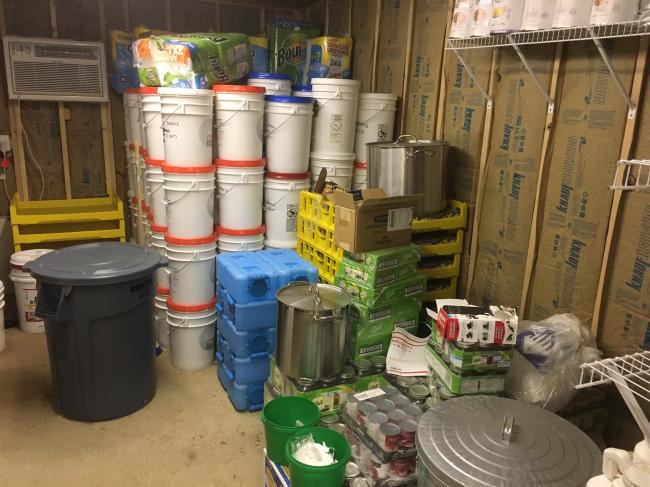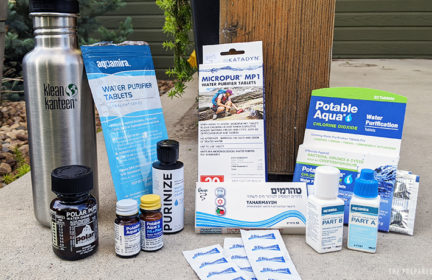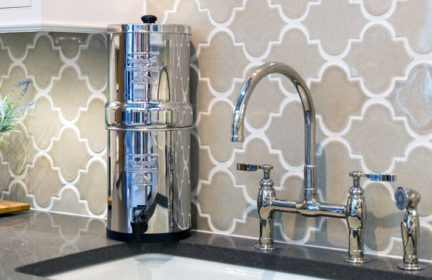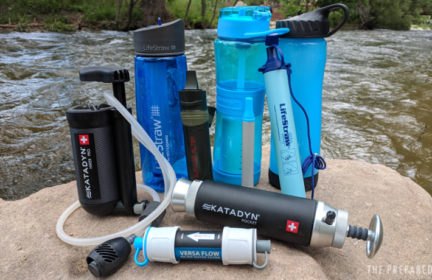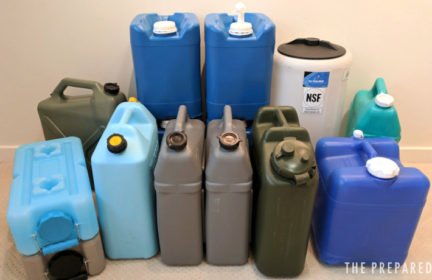Water storage issues–water bricks contaminated after 1 year
This is my third year doing an annual swap of water stores but the first time I have had an issue with contaminated water. I have Water Bricks and my method is to 1. wash them out with Dawn 2. rinse and dry 3. refill with tap water 4. add unscented bleach. This is the first year I have opened them up to find white threads floating in the water and what I can only describe as orange blobs in one. One container had a visibly discolored and slimy lid, too. The most obvious thing to me is that maybe the bleach was too old, but I still feel like in a clean, air tight container, it shouldn’t have been an issue? I’m not sure. Any help or advice on how to prevent this is greatly appreciated.
I am very glad I do an annual check on the water and I am going to be ordering a Berkey or similar to have a way to filter water faster than my Sawyer mini filters could if this ever happens again and I need to use my stores. I’m also glad I have purification tablets on hand, too. (crossposted to r/preppers)
-
Comments (11)
-
Barb LeeContributor - January 16, 2022
We recently started using Berkey Biofilm Drops. I expect it to help both in the water jugs and in the Berkey filter itself.
-
AShields - January 17, 2022
I might pick up some of those. In opening up all of my stored water, the water in the Waterbricks that were stacked all had visible issues and the ones that weren’t stacked look fine. I did notice that all the lids were showing signs of deterioration inside after 4 years of use. I’m replacing all the suspect WaterBricks with Scepter containers.
-
-
Bill Masen - January 17, 2022
We changed our stored water around every 4 to 6 months, always have because it goes ” flat” after about 3 months. You containers must be kept cool and not exposed to daylight either. You will get aerobic or anaerobic bacteria growth in all but the best circumstances thats why is best rotated often.
-
Olly Wright - January 17, 2022
Sounds like you do have some contamination in your containers. I’ve used Water Bricks for multiple years and haven’t had this issue.
Here are my thoughts about your process:
1. wash them out with Dawn – Good to do, even for a brand new container. You have to absolutely cover and clean every inch of the container. I do this by filling up with hot soapy water, getting a bottle brush or clean rag down in there and manually scrubbing all I can. Swish it around a lot, dump, rinse, and repeat. Take extra care of cleaning the lid and gasket, taking it apart and wiping down if possible. After I soap wash it twice I then fill up with water again and pour in a very concentrated amount of bleach. Let it sit for 15 minutes then flip the container over and wait another 15 minutes. Rinse this out until it is completely bleachless tasting. Be careful not to touch the inside and contaminating it.
2. rinse and dry – Definitely rinse out, but do not dry. Putting in a clean towel to dry will only expose the inside to bacteria. Just rinse and then fill with tap water as you state in step #3. Rinse off the outside of your container with cold water too because any residue bleach on the outside can stain your clothes.
3. refill with tap water – If you live in the city with clean tap water than this should be all you need to do, if you live off a well or get your water from another source then you will need to add bleach
4. add unscented bleach – Not 100% necessary if you followed the above steps perfectly, but doesn’t hurt to add. Make sure your bleach is less than 6 months old because that is the shelf life of bleach before it starts to break down. Using old bleach will not have the same kick as a newer bottle.
Final step is storage. I dry off my sealed container with a clean towel and then let it air dry for a few minutes. I then take a piece of low tack painters tape and put it on the lid of the container saying when it was last filled so I know when to rotate. Keep your container in a cool and dark location. Heat and sunlight are the enemy and will lead to junk growing in your water. Make sure the container lids are screwed down completely and no air can get in. I like to screw down as hard as I can and then push on the sides and see if it burps out some air. Avoid storing in the garage as the fumes of your car can leach into the plastic walls of the container and contaminate your water too.
These are the steps I’ve followed after taking The Prepared’s water course and it’s been serving me well so far.
-
Colorado Jones - January 17, 2022
Thanks, Olly! Very helpful tips. When refilling with tap water, I would add: don’t use a garden hose as there’s a good chance that mold or, possibly, other contaminants are growing inside. Not a problem for my lawn but definitely not something I want hanging out in long-term water storage containers.
-
AShields - January 17, 2022
Thanks! I never touch the inside of the containers or the lids after I bleach them to minimize contamination opportunities. I previously air dried after using the concentrated bleach. This past year was the first year I’ve had issues and while I do think it’s from putting too much weight on them and the lid gaskets starting to deteriorate, I did a rinse and then filled with tap water right away. I am now more than ever a big fan of adding a bit of bleach in, as you can think you have been careful and still open it up to an unpleasant surprise! Fresh bleach is a bit of extra insurance. I also won’t be stacking my water stores any more!
-
RedneckContributor - January 17, 2022
I’m trying to figure out how the gaskets could deteriorate… and not leak? I know this is a stupid question, but do you stack them on their sides, like bricks? Seems to me, if you had gasket issues, you would see leakage.
I’ve never had that issue before. I too add a bit of bleach to each one before sealing. Mine are stored in a barn storage room that never gets above 70 degrees and is kept completely dark. It can freeze in winter, so I give each container void room for expansion. I just don’t see how microbes could grow in such an environment… especially with the bleach. This one stumps me.
-
AShields - January 18, 2022
I’m also pretty baffled, to be honest. The deterioration is all right around the edge. They were stored in an interior ground floor closet that stays pretty cool and is dark except when someone turns the light on to get the vacuum, so…not that often 🙂 The differences definitely seem to be between the stacked vs not stacked containers so lesson learned there!
-
RedneckContributor - January 19, 2022
Oh, so they weren’t stacked? I wonder if that was the issue? Here is a pic of some of mine in storage.
-
-
Tony B - January 18, 2022
How many folks just buy 24 packs of cheap bottled water at the grocery store? I have stacks of those and they seem to have worked ok for several years of storage without visible contamination. (I am replacing them now after several years, partly because I noticed the water volume inside seems to be going down gradually over time. I think they are probably evaporating through the thin walls of the plastic bottles, very slowly.)
-
Pops - January 23, 2022
I’ve used various containers over the decades, no real refill or maintenance schedule and rarely add bleach but they have always worked fine when the power went out or my plumbing projects went awry.
In our newest house I accidentally came across about the easiest solution, big bottled water. The city water here is nasty, so we got a cheap cooler and started using bottles until we could get the new fridge in.
I can’t remember exactly but the cleaned and filled bottle is around $15 and about half is the bottle so about $7 for exchanging empties. They have 3 gallon jugs too I think. I even saw steel racks for 3 or 5 jugs online for not a terrible price if you aren’t a DIYer.
The best part of course is the no maintenance, the jugs are sanitized and the water too. The jugs are recycled which is important. They are too heavy for my wife but I go to the store here and there.
We left a space in the kitchen for the dispenser. The one we bought isn’t very pretty, but does dispense hot and cold if you like.
We rotate just like everything else. FDA doesn’t have standards but says 2 years. We use about 1 a month and I’m gradually building up a stock, I doubt I’ll ever get to 24 but that would be nice, about 250 gallons = 3months for 2 people would be overkill here because it rains occasionally. 2 horizontal racks about 8′ long with 3 tiers would do it— or maybe standing.
-
- Has anybody blood tested the Oroweat keto tortillas? - 3 days ago
- News for the Week 2024-04-22 - 3 days ago
- News for the Week 2024-04-15 - 4 days ago
- What is the best camp stove for an emergency power outage or camping? - 6 days ago
- Chickens for preppers: Important considerations - 7 days ago
This forum is heavily moderated to keep things valuable to as many people as possible. Full community policies are here. The basics:
- 1. Be nice to each other.
- 2. Stay focused on prepping.
- 3. Avoid politics, religion, and other arguments.
- 4. No unfounded conspiracies, fake news, etc.
- 5. Debate ideas, not people.
